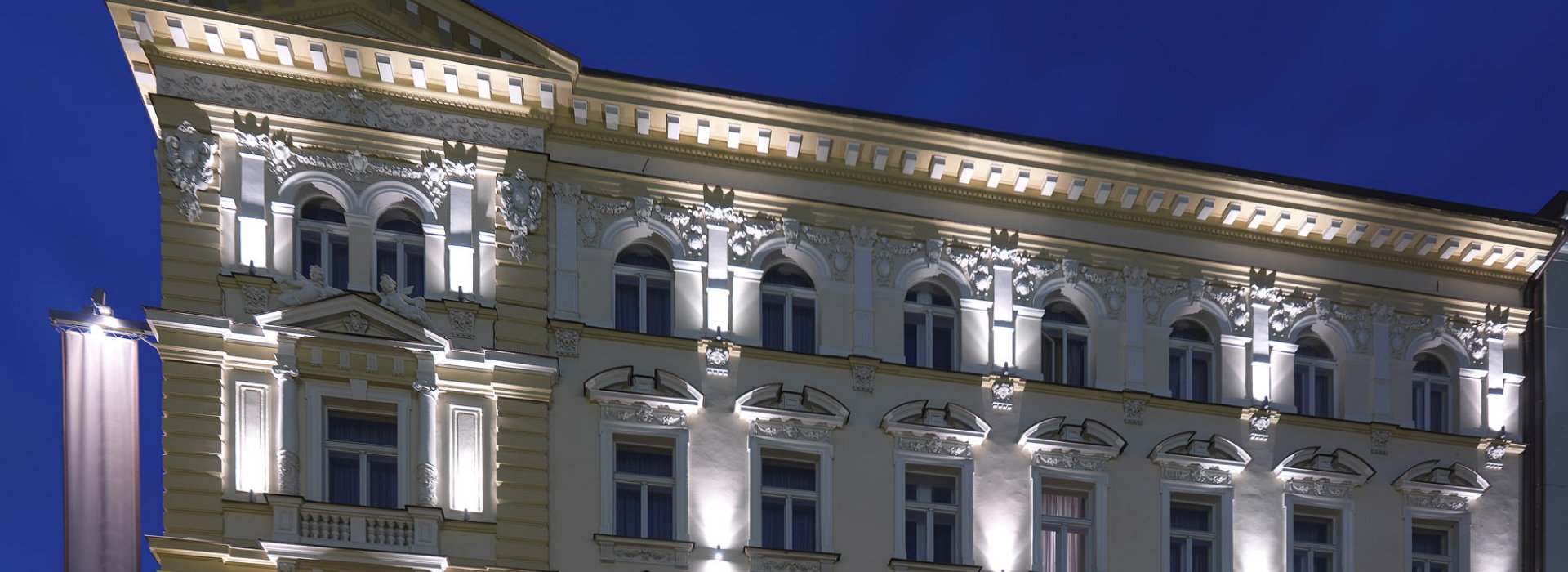History
Founded at the end of the IX century, Prague soon became the seat of the Kings of Bohemia, some of whom were also Emperors of the Sacred Roman Empire.
This fascinating city was called in many different ways: the city of dreams, Stone Prague, Magic Prague, the city of a hundred spires, the city of music, the mother of cities, Jewish Prague and many more. The only certainty is it will be called "the golden city " forever.
Only few cities in the world host a similar chequerboard of different patterns and atmospheres: in Prague everything is magic and mysterious. An extraordinary patchwork of cultures gathering deep Czech, Jewish and German influences, it is one of the most tolerant cities in Europe and its streets are embellished by plenty of different architectural styles which give tourists the possibility to enjoy outstanding sceneries while experiencing rare cultural opportunities.
At night, Prague is really fantastic; walking down the streets of the "old town", tourists will have the possibility to enjoy the magic atmosphere of this wonderful city and its lights.
Prague gathers sixteen bridges which cross the river Moldova, as well as impressive fortresses, bell towers, churches, palaces and stately homes (it is also called the "city of a hundred spires").
Habsburg Era
On May 6, 1757, Prague was the seat of the homonymous battle (the Battle of Prague), during which Frederick the Great’s Prussians forced Austrians led by Prince Charles of Lorraine to retreat even if they decided not to assault Prague’s city walls; in July of the same year, Prussians were forced to raise their siege of Prague because of the defeat they suffered during the Battle of Kolin.
The four independent municipalities which once formed Prague merged into a single town in 1784. Prague’s St. Vitus Cathedral cherishes the most important relics of the whole country, that is to say the mortal remains of Saint John of Nepomuk, the first martyr of the Seal of the Confessional and Bohemia’s patron saint.
These four municipalities were Hradčany (the Castle situated west of the river Moldova), Malá Strana (the Small Quarter situated south of the Castle), Staré Město (the Old Town situated along the eastern banks of the river opposite the Castle) and Nové Město (the New Town situated south-east). The city experienced a further expansion with the annexation of Josefov (the Jewish Quarter) in 1850 and Vyšehrad in 1883.
XX century
At the beginning of 1922, 37 further municipalities joined the Republic, and population grew by 676.000 people.
Most of the 50.000 Jews who lived in Prague died during the Nazi genocide of World War II.
In August 2002, Prague suffered from widespread floods that damaged many buildings but spared the city’s major beauties. The reaction of the city to this terrible catastrophe was quick and smart: after one year only, most areas were restored and an emergency plan was conceived to avoid the occurrence of similar episodes: the paving of the banks of the river situated near the "Old Town" was realized in such a way that it allows the building of high slabs of stone which are able to protect the city’s immense historical and artistic heritage from the risk of another flood. Prague is a famous tourist destination which attracts almost 6.000.000 tourists a year. It is peppered with fascinating historical houses which are mostly covered with enchanting murals and is home to one of the most important architectural collections in the world, which gathers Art-Nouveau, Baroque, Cubist, Gothic, Neoclassical and Ultramodern works of art. The city’s most important tourist attractions are Staré Mesto, some fascinating spots linked with Franz Kafka, Malá Strana, Hradcany, St. Vitus Cathedral, Charles Bridge (Karluv Most), the Lennon Wall, the old Jewish cemetery, the quarter of Nove Mesto and the Municipal House (Novomestská radnice).
Culture
Prague is a famous cultural centre and hosts many theatres (including the National Theatre), opera houses, concert halls, art galleries and music centres. It is also the site of some of the most important offices and institutions of the Czech Republic, such as the President, the Government and both houses of Parliament. Apart from the famous Charles University (Univerzita Karlova), the city hosts seven further universities and colleges, such as the Czech Technical University (CVUT), which was founded in 1707. The Defenestrations of Prague were two incidents in the history of Bohemia that occurred in 1419 and 1618 respectively. This term has also been used to describe the incident of 1948. Defenestration is the act of throwing someone out of a window. Both incidents helped to trigger prolonged conflict within Bohemia and beyond, but the term is most commonly used to refer to the latter incident, since it was central to the start of the Thirty Years’ War on May 23, 1618.
Some members of the Bohemian aristocracy rebelled following the election of Ferdinand II, Duke of Styria and a Catholic, as King of Bohemia, a Protestant country. Roman Catholic officials ordered the cessation of construction of some Protestant chapels on land which the Catholic clergy claimed ownership. Protestants contended the land in question was royal, rather than owned by the Catholic Church, and was thus available for their own use. Protestants interpreted the cessation order as a violation of the right of freedom of religious expression granted in the Letter of Majesty issued by Emperor Rudolph in 1609.

